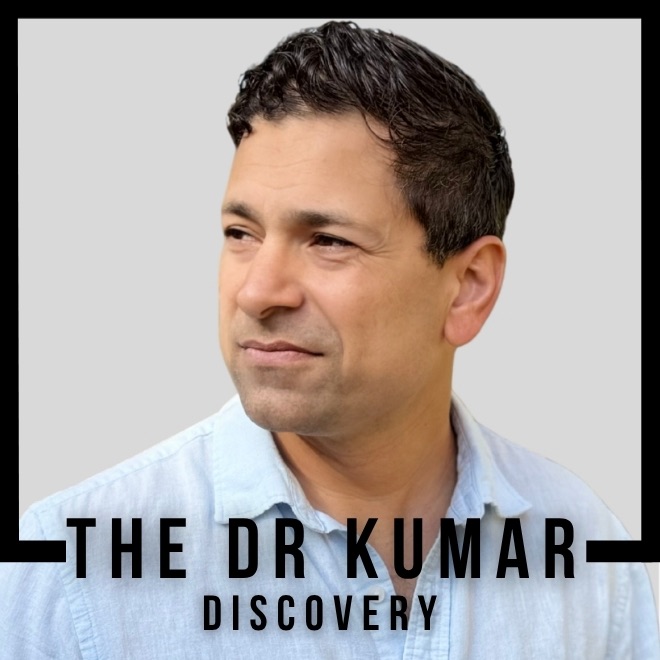Dr. Kumar’s Take:
This study adds strong clinical evidence that combining vitamin D3 and vitamin K2 can significantly improve bone density in postmenopausal women with osteoporosis. While each vitamin alone helped, using them together had the best results—suggesting a synergistic effect. For aging women at risk of spine fractures, this combo may be a powerful tool for improving bone strength and reducing fracture risk.
Key Takeaways:
✔ Vitamin D3 or K2 alone helped slow or slightly reverse bone loss in the spine.
✔ The combination of vitamin D3 and K2 showed a significantly greater improvement in bone density than either alone.
✔ Calcium alone failed to prevent bone loss and showed a decline in bone density over 2 years.
Actionable tip:
If you’re a postmenopausal woman at risk of osteoporosis, talk to your doctor about combining vitamin D3 and K2 supplementation. This combo may do more for your spine health than calcium alone.
Brief Summary:
A two-year randomized clinical trial studied 92 Japanese women with osteoporosis who were more than five years past menopause. Participants were split into four groups: vitamin D3, vitamin K2, a combination of both, or calcium alone. Bone mineral density (BMD) of the lumbar spine was tracked using DXA scans at the start, 1 year, and 2 years.
The results showed that:
- Calcium alone led to a decline in bone density
- Vitamin D3 and K2 alone led to modest improvements
- Combining both D3 and K2 led to the most significant increase in BMD
No adverse effects were reported.
Study Design:
- Type: 2-year randomized controlled clinical trial
- Participants: 92 postmenopausal women (ages 55–81) with osteoporosis
- Groups:
- Vitamin D3 (0.75 µg/day)
- Vitamin K2 (45 mg/day)
- Combination of D3 + K2
- Calcium (2 g/day)
- Primary Outcome: Percent change in lumbar spine BMD (measured at L2–L4)
Results:
- Calcium group: BMD declined by -0.79% at 2 years
- Vitamin D3 group: BMD increased by +0.38%
- Vitamin K2 group: BMD increased by +0.90%
- Combination group: BMD increased by +1.35%
- The increase in the combination group was significantly better than all other groups.
How Vitamin D3 and K2 Support Bone Health
Vitamin D3 helps your gut absorb calcium and stimulates the production of osteocalcin, a protein that helps build bone. But osteocalcin needs to be activated to work—this is where vitamin K2 comes in. K2 activates osteocalcin through a process called carboxylation, helping the calcium bind properly to bone instead of soft tissues.
The study suggests these two vitamins may work better together than alone—D3 boosts osteocalcin production, and K2 makes sure it functions properly.
Related Studies and Research
Investigates combined vitamin D3 and K2 supplementation effects on bone mineral density over 18 months. – Evaluates how D3 and K2 together influence BMD changes in aging adults.
Comprehensive meta-analysis of randomized trials on MK-7 supplementation and osteoporosis prevention in postmenopausal women. – Pooled insights on K2’s bone-protective effects.
Explores natto intake’s association with reduced bone loss rates in postmenopausal women. – Links fermented soy consumption to lower bone turnover.
Review of MK-7 supplementation effects on bone quality, including compression and impact strength metrics. – Details improvements in skeletal biomechanical properties.
Examines warfarin’s influence on bone mineral density reduction and fracture incidence. – Assesses negative impacts of long-term anticoagulation.
Frequently Asked Questions
Should I take vitamin D3 and K2 together?
Yes, this study suggests they work better together than alone for improving bone density in the spine.
What type of vitamin K2 was used?
The study used menatetrenone, also known as vitamin K2 MK-4, at a dose of 45 mg per day. But this high of a dose is fairly impractical. The MK-7 version of Vitamin K2 can be taken at doses on 180 mcg to 375 mcg daily with good results.
Is calcium still important?
Yes, but in this study, calcium alone failed to prevent bone loss. It’s likely most effective when consumed as part of a healthy diet and combined with D3 and K2.
How long does it take to see results?
BMD improvements were seen by year 1 and were more significant by year 2. This is a long-term investment in bone health.
Conclusion
For postmenopausal women facing the risk of osteoporosis, the combined use of vitamin D3 and vitamin K2 shows real promise. Together, they help build stronger bones more effectively than when taken alone. Calcium is still important but shouldn’t be the only focus. This study highlights a safe, low-cost, and potentially powerful strategy to reduce spine fracture risk through nutrient synergy.


